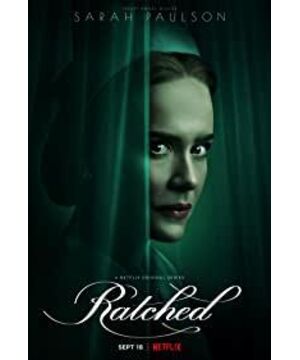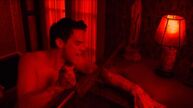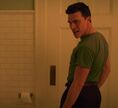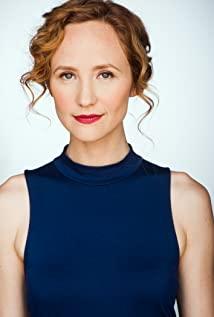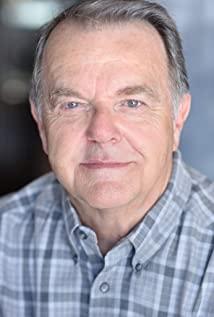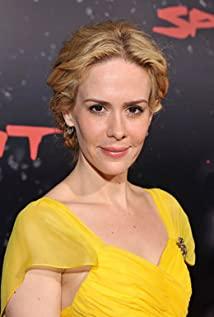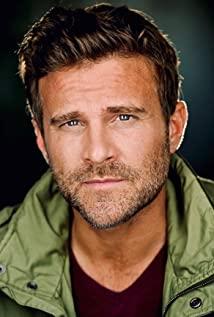Latchett Season 1 Director : Ryan Murphy Writers: Evan Romansky, Ian Brennan, Jennifer Short Starring: Sarah Paulson, Judy Davis, Finn Wittlock, Cynthia Nixon / Jon Joan Briennes / Charles Cavill / Sharon Stone / Amanda Plummer / Corey Stoll / Alice Englert
- After 45 years, the American version of "Mammy Rong" is back!
- Have you seen all the classic tributes?
- Before blaming the lunatic, blame the person who drives the lunatic.
The most frequent villain in derivative film and television works is the clown.
Whether it's Jack Nicholson in Batman, Heath Ledger in The Dark Knight, or Joaquin Phoenix in Joker.
As long as the actor who has touched him, basically has a face-to-face with the major awards and Oscar statuettes.
Now, another classic villain has his own spin-off series .
Not Hannibal from The Silence of the Lambs, nor the Dark Lord from Star Wars.
But a person with no superpowers, not even very evil—
In the movie "One Flew Over the Cuckoo's Nest", Latchett was played by Louise Fletcher as the head nurse .
Punch in at work, take care of sick patients, and have no bad habits.
How can such a nurse aunt who laughs at everyone become a classic villain?
Rather than calling Ratchett evil, what she symbolizes is terrifying enough.
Patients take medicine, see a doctor, and are forced to listen to classical music every day.
In such a hospital, freedom is not allowed, and the rules and regulations within the system keep patients on track.
Nicholson's prisoner strangles Ratchett after patient Billy commits suicide, but also undergoes electrotherapy after unsuccessfully returning.
In the end, a good man becomes a lunatic.
It was such a quintessential character that 45 years later, Netflix launched the single-player prequel series "Ratchett . "
Different from the restraint and distortion of human nature by the rules in the movie , the series borrows the name of Ratchett to tell a story that is closely related to the current hot spots.
In addition to some bloody scenes , LGBT, racism, women's awakening and other topics are reflected in "Ratchett".
In addition, "Sister Banana" Sarah Paulson and Cynthia Nixon, one of the "Sex and the City" quartet, all starred.
Netflix released 8 episodes at a time, which will definitely save you from the 8-day long holiday drama shortage.
On a rainy night, Edmund killed four priests in a row and was sent to a mental hospital for imprisonment.
Meanwhile, Ratchett arrives at the hospital.
She fabricated her experience as a nurse, lied that she had received a notice to go to the face, forced the former nurse to resign, and even planned to kill the patient.
Doing this just to be a nurse?
After entering the hospital at all costs, Ratchett didn't stop.
First set a trap to kill the patient, and then help the dean to settle the crisis.
Then staged the biography of Zhen Huan in the mental hospital, and took the handle of the head of the hospital to suppress the former head nurse, thus making a steady progress.
And what she did was related to the pastor's murder case mentioned at the beginning.
Ratchett is the sister of the murderer Edmund.
Do everything possible to enter the hospital, and even kill the only priest witness, in order to rescue his brother.
You who love suspense and excitement will definitely like "Ratchett", and fans and friends will also find fun in the play.
Through the sets, pictures, and character relationships, the series pays tribute to too many classic movie bridges .
The opening scene of Ratchett driving to a mental hospital and driving over a cliff is very similar to the opening scene of The Shining .
It's all a bird's-eye view of the car, followed by the mirror, and finally the destination.
The interior decoration of the mental hospital, the floor printing, is reminiscent of the hotel corridors in "The Shining" .
The symmetrical composition of the hallway , as well as the low-angle camera in the distant view , are very similar.
The hospital performed brutal frontal lobotomies on patients, using ice picks as props .
The American actress Sharon Stone, who plays the rich woman in the play, starred in the movie "Instinct" before , which involved the ice pick murder case.
Edmund and the female nurse's desperate couple is also a tribute to "Bonnie and Clyde" .
Including the last scene where the female nurse sacrificed her life, it copied the final chapter of Faye Dunaway's death in the film.
The rescue at the end, including the part where Edmund calls Ratchett after fleeing.
It is also a tribute to the second half of the movie "Silence of the Lambs" .
In terms of tone , it can be clearly felt that the series uses a lot of red and green tones to set off the atmosphere.
But "Ratchett" not only integrates red and green into the background, but also gives a strong visual impact through direct color changes .
It’s important to note that in color psychology, green and red actually come in pairs.
Green and red can symbolize fiery life at the same time, and can also express extreme decay and death at the same time.
In the play, green implies a kind of living hope.
After entering the hospital by grabbing the handle of the nurse, the background color of the corridor turns green, implying that her attempt has not yet succeeded.
At the same time, green also sends a mysterious and dangerous signal, indicating that this series of actions by Ratchett may cause an irreversible situation.
On the contrary, red indicates that the protagonist is on the verge of life and career crisis.
After the former head nurse was demoted, the hall turned red.
On the one hand, it heralded her career crisis, and on the other hand, it also indicated that she was going to start to set up a game against Ratchett.
Enough film quality, enough expressionist aesthetics, these are not enough.
Ratchett is also thematically distinct.
Although different from the basic setting of "One Flew Over the Cuckoo's Nest", the series is still close to the current social hot spots.
There are three broad categories of common problems facing the world today:
Class, gender, race.
"One Flew Over the Cuckoo's Nest" is still about class.
Like "The Shawshank Redemption", it constructs a mental hospital into a Panopticon Prison described by Foucault .
The mental hospital is like a huge prison, with head nurses, nurses, and guards performing their respective duties, and the people in it form a large or small disciplinary collective to monitor everything around them.
"Flying Over the Cuckoo's Nest" does not create a space class similar to "Titanic" or "Parasite", but starts from the spirit and disciplines patients.
Through drugs, surgery, and regular behavior at a certain period of time in daily life, the patients' every move is regulated and controlled with highly disciplined rules.
Therefore, Nicholson's final strangulation and the roar of the hospital patients were actually a resistance to the unreasonable system of the mental hospital .
The original film shows the struggle of individuals in the environment, emphasizing the core of the panopticon prison:
The powerful disciplinary role of a micro-power technology in modern society.
However, in the episode "Ratchett" , the focus has changed from the discussion of the surveillance class and the absolute superior-subordinate relationship between the head nurse and the patients to the focus on gender and race issues .
Viewers can also see Ratchett working hard to get the position of head nurse.
For a while, he approached the secretary of the governor, the co-principal for a while, framed reporters for a while, and attracted rich women for a while.
But the emphasis on class has been weakened a lot.
Let’s start with the gender issue in the show .
The heroine Ratchett has an LGBT identity interpretation:
Deep down, she loved the governor's secretary.
When the other party took her to a special tavern for dinner, Ratchett categorically refused.
Due to social pressure and her desire to save her younger brother, she had to suppress her inner love.
But after the female secretary was shot, Ratchett could no longer bear the pain in her heart, and told her true thoughts in front of the hospital bed.
There is also a glamorous female nurse , obsessed with Ratchett's younger brother, and even a little obsessed.
She loves Edmund, but compared to love, she will devote herself to the flames of love without hesitation, even if it is burning with lust.
The nurse helps Edmund escape from prison and spends a good time on the farm with him.
Eventually, after Edmund was taken away by the police, she frantically fought with the police and eventually fell in a pool of blood.
It's an ultra-liberal female figure in stark contrast to Ratchett's restrained love.
Why do I say Ratchett is restrained.
In addition to the rejection of the female secretary in the early stage, there is also Ratchett's hazy love for his brother Edmund.
This hidden affection is reflected through the ice pick .
In the play, in addition to the hot weapon, the gun, there is also a cold weapon - an ice pick.
Ratchett dreamed that when Edmund killed himself, the weapon was also an ice pick.
The act of killing an ice pick is penetration . According to the Pansexualism in Freud's psychoanalysis , penetration replaces sexuality.
When explaining the behavior of the rich woman's son who likes to stick people with needles, the dean also said that this is a substitute for sexual behavior.
In the hospital's underground prison, Ratchett tries to save Edmund, who wonders if she had poisoned her food.
Taking risks for his younger brother, only to get a rake in return, the angry Ratchett vaguely expressed his jealousy with a double-crowned remark:
She struggles with Edmund's falling in love with the nurse, but not herself.
This also proves Ratchett's restraint and forbearance in eroticism.
Another point is about the struggle between the sexes .
Ratchett rescued his younger brother and played with the male reporter and the male dean.
Although at first, Ratchett needed the help of a male superior to complete the rescue operation.
She used the male dean to become the head nurse, and immediately changed her mind, touting the former female head nurse as the dean and pulling the male head nurse to step down.
In the end, it was Ratchett, the female secretary, and the former female head nurse who planned the rescue together.
So, the ending is still a small victory for the women's collective .
Regarding the shaping of the male image, I wonder if you have noticed:
All male characters are crippled.
The younger brother Edmund was a murderer and had occasional neurotic attacks.
The male dean is a Filipino with racial issues.
The governor is a sadist who will do anything to campaign.
Even the rich woman's son is a broken child.
There were only two security guards with a conscience, and it turned out that one was a black man and the other was a guy with a severely burned face.
Therefore, in terms of character setting, "Ratchett" also has a certain female tendency.
Another reality map is about race .
The black security guards, Asian deans, and black female schizophrenics in "Ratchett" are all suppressed parties.
Needless to say, the fat black security guard is a victim .
He inadvertently shot journalists and covered up the torture of Dean and Ratchett.
At the dance, he helped the patient and was killed by Edmund.
The Asian dean always wanted to fulfill his medical dream, but after turning the rich woman's son into a monster, she was chased and killed by the rich woman.
And as a father, he was also unfortunate, and he failed to fight for custody of his daughter.
He spent his life running for the mentally ill to the point of neglecting his own family, leading to a court ruling against him.
His family failed, and he eventually died at the hands of a mad female patient, which also implied his career failure.
Finally, let's talk about black women .
With multiple personalities, she always fantasizes that she is either a cellist or an athlete.
After being locked in the closet, she had a seizure and accidentally killed the Asian dean.
Mental oppression made her mental state worsen.
After witnessing the tragic death of the Asian dean, there is another dean in her personality.
The show's main guess here is that the other personalities of the female patient were probably created after witnessing the death of the other person.
The management of the mentally ill obviously goes against human nature .
Especially the frontal lobectomy in the film , through physical surgery, an awl pierced into the corner of the eye, turning people into puppets.
If you are not obedient, put it directly in the hot water bath for a soak, and then put it in the cold water bath for a while.
This is not a cure for mental illness, but an obliteration of the free spirit.
Why do these symptoms appear in the play?
Not socially dictated .
The younger brother Edmund is not a heinous villain. In his heart, he is seeking revenge for justice .
Because those pastors were beasts in their clothes and defiled their mothers.
For animals, those pure souls, he didn't even want to watch others slaughter them.
Even Ratchett was not born to be possessed by Mammy, stabbing people with ice picks everywhere.
Because of the abuse of her and Edmund by the foster family, she was unable to enjoy the joy of being a child.
Watching an ordinary puppet show, which evokes the shadows of childhood, shows that the trauma is very deep.
The most frequently heard phrase is:
We always blame the ugly voices first, not the people who do the evil.
"Ratchett" is another all-villain drama.
But behind this is an unspeakable and extremely terrifying spiritual cage.
It customizes things for us outside the box and twists us out of the way.
What can we do about this?
Believe in the morality in your heart, and come to the original path that is destined to be bumpy.
View more about Ratched reviews


